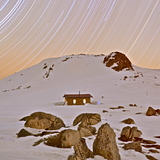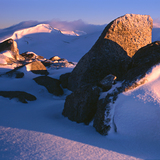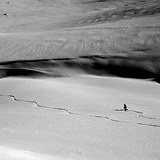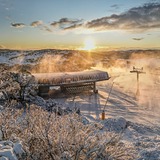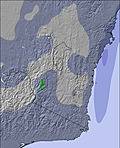 Ski Australia - New South Wales
Ski Australia - New South Wales
There are around 20 Australian ski resorts, a little under half of these are commercial ski centres, the remainder are club fields run by enthusiasts and generally volunteers.
Most of Australia's ski areas are located in New South Wales and Victoria, home to the country's highest peaks, as well as most of its population. There are two small ski centres on the southern island of Tasmania too however.
There has been heavy investment in resort development in recent years at the largest resorts, particularly Perisher, which measures itself as the largest ski area in the southern hemisphere (in terms of groomed terrain and number of lifts) but also at resorts including Falls Creek, Mount Hotham and Mount Buller.
Snow cover can be an issue at Australian ski areas but, as in other countries where cold weather is not guaranteed through the winter, lots of coping strategies have been developed to ensure there is some snow even in the ‘bad times’ including snow farming, cloud seeding and traditional snow making. One resort has won awards for recycling ‘waste water’ in to snow after purification. And in fact Australian resorts typically have relatively good snowfall records from May to September.
Australian ski centres have hit media headlines in the country in recent years for a reason the centres are not so keen to promote – lift ticket prices have topped the world tables, sometimes overtaking the usual highest resorts in North America, as the most expensive anywhere. This is partly due to the high operating costs for resorts in Australia but more caused by the inexorable rise in value of the Australian dollar against other currencies (at least at the time of writing!)
Although Australia is one of the world’s newest major nations, skiing in Australia is as old as the sport itself anywhere in the world, thanks to immigrants bringing skiing to Australia with them in the nineteenth century.
Indeed Australia recently celebrated 150 years iof skiing – longer than most other countries – thanks to The Kiandra Snowshoe Club in Australia which lays joint claim to the title "world's oldest ski club" with a Norwegian contender.
The title may be a little academic, as the Kiandra Snowshoe Club's founder members were probably Norwegian immigrants anyway, as it is they who are credited with bringing skiing to Australia in 1861 during the gold rush. Since then Australians, along with New Zealanders, have re-exported their skiing talents world-wide, it's a rare ski school in the world's top resorts hat doesn't employ at least one antipodean ski teacher.
In more recent times the world's first indoor snowdome (arguably), Mount TheBarton, opened in Australia in 1987 although it closed after 20 years and subsequent attempts to bring indoor snow back to Australia are yet to prove successful. However several of the world's pioneering 'indoor snow' manufacturing businesses are also Australian.
Most resorts offer a good mix of accommodation from basic to high calibre. There's skiing here when 98% of the world's resorts are shut down through "lack of snow" in the northern hemisphere’s summer months but it can be a long trek to most of the resorts with few ski centres near major population centres. However increasingly good flight links from Melbourne and Sydney have shortened the trip.
Australia - New South Wales: latest snow conditions round-up
Summary of forecast snowfall and ski conditions for resorts in Australia - New South Wales. Fresh snow is forecast at 0 resorts. Powder is reported at 0 resorts and 0 are reporting good piste conditions.
All resorts
Ski resorts of Australia - New South Wales, alphabetically
| Resort |
|
snow depth top and bottom |
on-piste |
off-piste |
Last Snow |
Next 9 Days 0–3 | 3–6 | 6–9 snow (cm) |
Freezing level (m) |
||||||||||||||||||||||||||||||
|---|---|---|---|---|---|---|---|---|---|---|---|---|---|---|---|---|---|---|---|---|---|---|---|---|---|---|---|---|---|---|---|---|---|---|---|---|---|
| Fri | Sat | Sun | Mon | Tue | Wed | Thu | |||||||||||||||||||||||||||||||
|
(1760 m — 1954 m) snow report 5 days ago |
|
|
|||||||||||||||||||||||||||||||||||
|
(1700 m — 2034 m) snow report 5 days ago |

|
|
|
||||||||||||||||||||||||||||||||||
|
(1400 m — 1520 m) snow report 29 days ago |
|
|
|||||||||||||||||||||||||||||||||||
|
(1365 m — 2037 m) snow report 14 days ago |
|
|
|||||||||||||||||||||||||||||||||||

